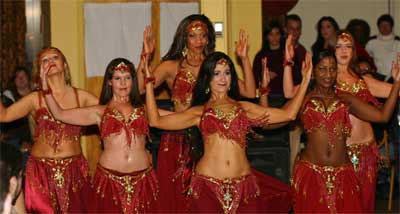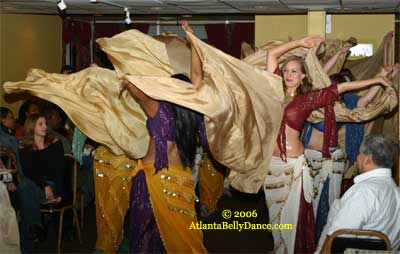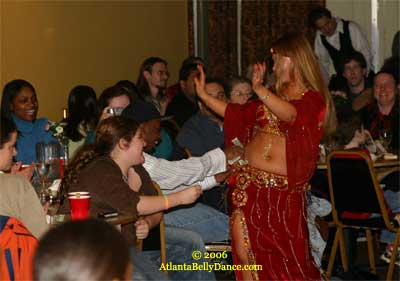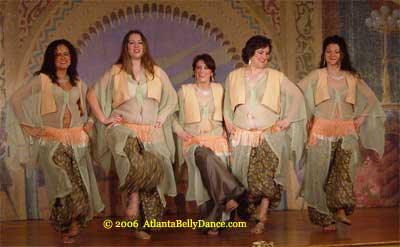| |
|
 |
Home >> Overview >> Troupe Dance vs. Solo Dance
Troupe Dance vs. Solo Dance
|
In a typical show, teachers let their students perform as a group, some advanced students might do a partner dance, and the teacher herself will perform a solo, as will the guest star(s). Much rarer are performances by professional troupes. So how comes?
|  |
The vast majority of professional belly dancing is done by individuals that might have professional friends that perform as guest stars, but are too different in appearance and/or dance style to even allow the possibility of a partner dance. Since partner or troupe dances also usually require a matching outfit, this requires some investment on all sides. As a result, troupe costumes tend to be simpler and cheaper costumes, since one can only use them for troupe dances – you don’t want to be in a show where the star before you had the same costume as you are going to go up in next.
For students, there is safety in numbers. So-what if all but one dancer raise their hands at the same time, everyone is cheering and people focus on “their” friend-dancer only anyway.
Being in a troupe brings all the benefits such as a sense of community and belonging. Friendships made in dance troupes can last a long time, even past the duration of the troupe itself.
|  |
|
For ongoing performances in restaurants, and the same is true for most party-bellygrams, solo-performances are the standard. First of all, most restaurants only hire one dancer per night to begin with. Second, even if they have more than one dancer, a partner dance or troupe dance would require that you actually have staged and practiced the dance together. No restaurant that I know of pays for that kind of “extra”.
|  |
Egyptian Oriental style, by its very nature, is a solo dance. People frequently refer to "raqs sharqi" as the "women's solo dance", to distinguish it from traditional folk dances such as the hagallah or debke, which are group dances. Some of the old black-and-white movies might show stars such as Samia Gamal accompanied by groups of supporting dancers behind them, and even today a soloist might hire some "supporting dancers" to add energy to her show or hold audience attention during her costume changes. This is also the standard for Bollywood style dances, where the singer and/or star perform in the front, supported by dozens of background dancers.
In Egypt, nearly all group dances consist of folkloric-based styles. Therefore, American dancers who wish to emulate the Egyptian Oriental style as closely as possible usually dance as soloists.

(see www.shira. net/styles2.htm)
|
|
|






